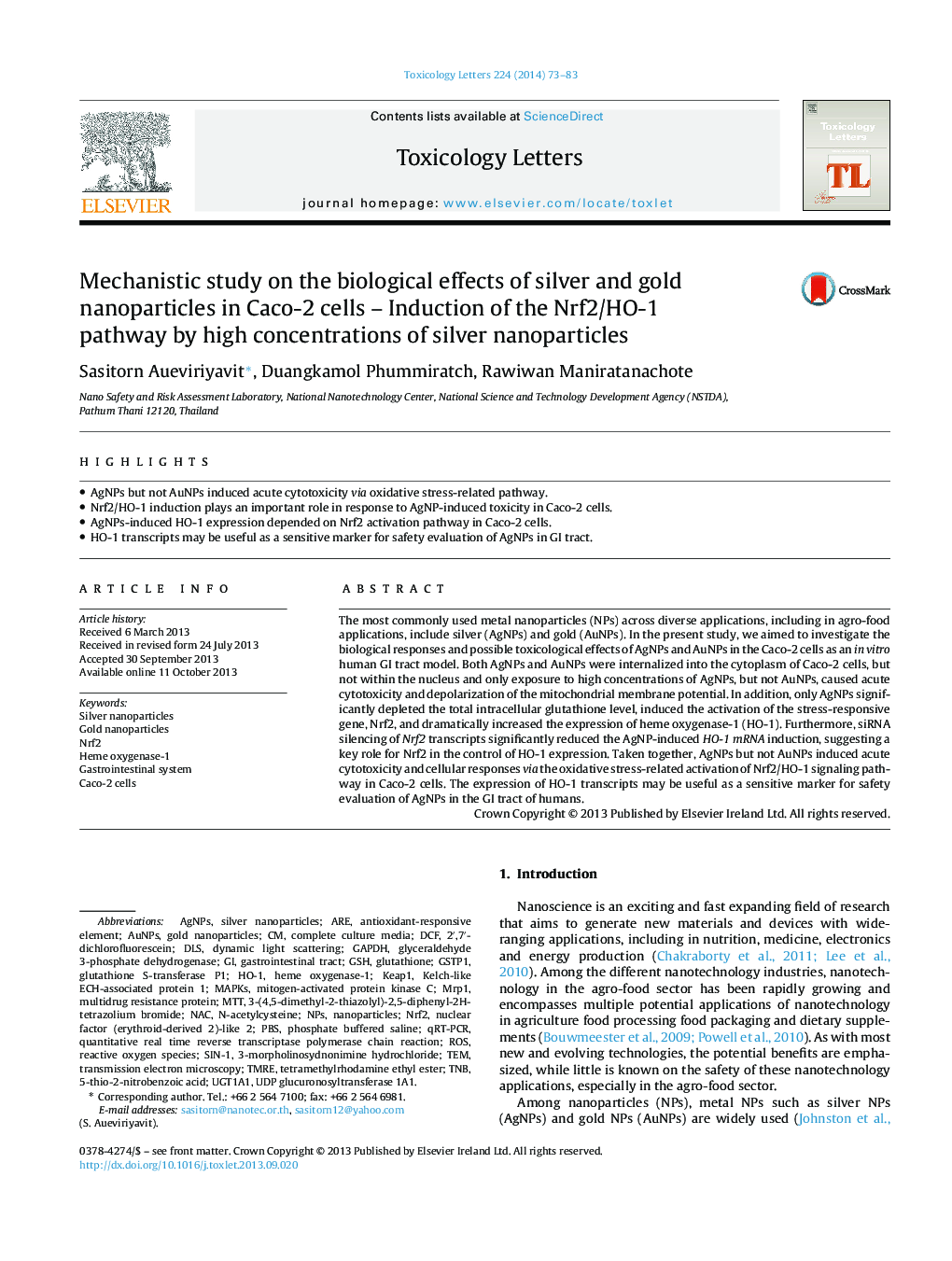| Article ID | Journal | Published Year | Pages | File Type |
|---|---|---|---|---|
| 2599116 | Toxicology Letters | 2014 | 11 Pages |
•AgNPs but not AuNPs induced acute cytotoxicity via oxidative stress-related pathway.•Nrf2/HO-1 induction plays an important role in response to AgNP-induced toxicity in Caco-2 cells.•AgNPs-induced HO-1 expression depended on Nrf2 activation pathway in Caco-2 cells.•HO-1 transcripts may be useful as a sensitive marker for safety evaluation of AgNPs in GI tract.
The most commonly used metal nanoparticles (NPs) across diverse applications, including in agro-food applications, include silver (AgNPs) and gold (AuNPs). In the present study, we aimed to investigate the biological responses and possible toxicological effects of AgNPs and AuNPs in the Caco-2 cells as an in vitro human GI tract model. Both AgNPs and AuNPs were internalized into the cytoplasm of Caco-2 cells, but not within the nucleus and only exposure to high concentrations of AgNPs, but not AuNPs, caused acute cytotoxicity and depolarization of the mitochondrial membrane potential. In addition, only AgNPs significantly depleted the total intracellular glutathione level, induced the activation of the stress-responsive gene, Nrf2, and dramatically increased the expression of heme oxygenase-1 (HO-1). Furthermore, siRNA silencing of Nrf2 transcripts significantly reduced the AgNP-induced HO-1 mRNA induction, suggesting a key role for Nrf2 in the control of HO-1 expression. Taken together, AgNPs but not AuNPs induced acute cytotoxicity and cellular responses via the oxidative stress-related activation of Nrf2/HO-1 signaling pathway in Caco-2 cells. The expression of HO-1 transcripts may be useful as a sensitive marker for safety evaluation of AgNPs in the GI tract of humans.
